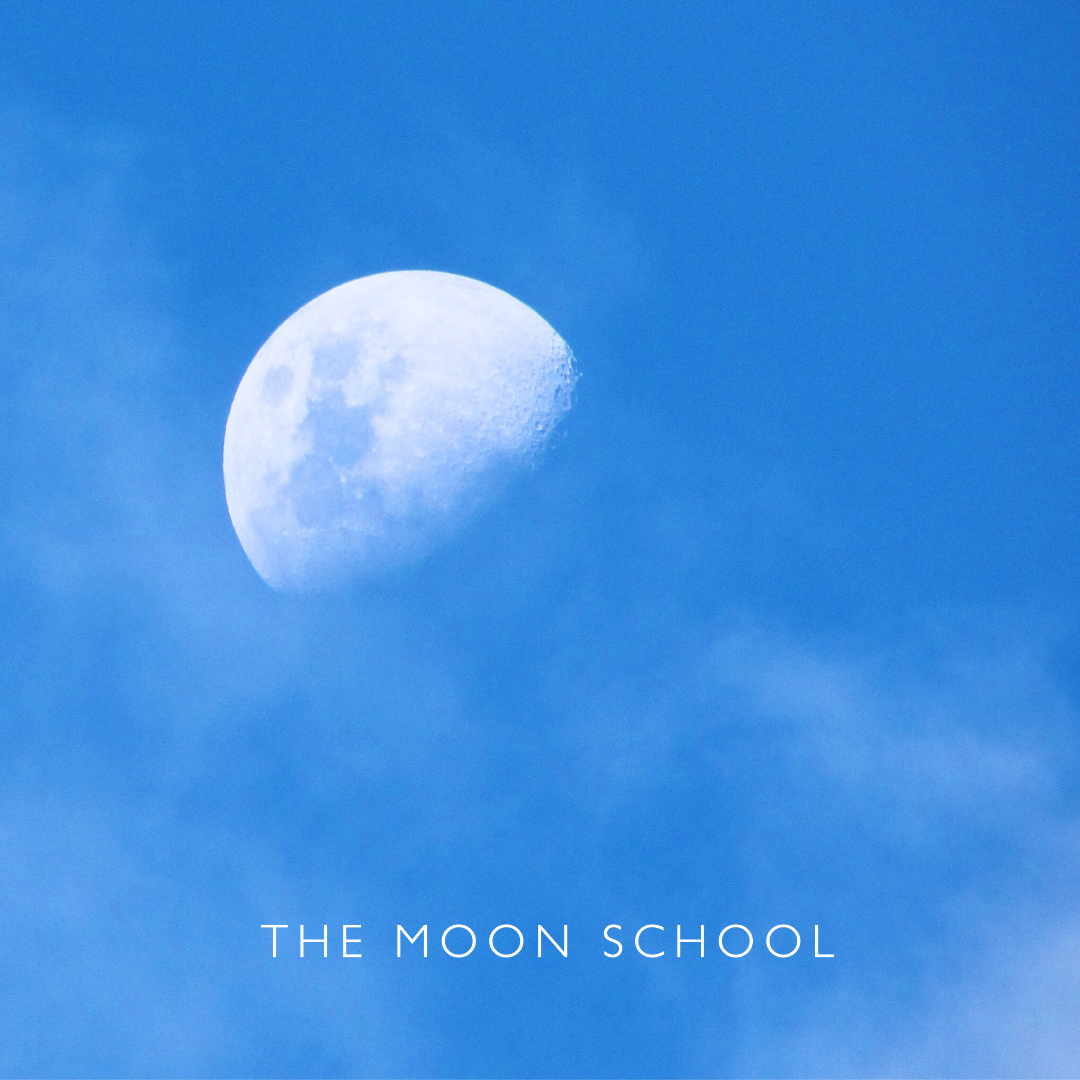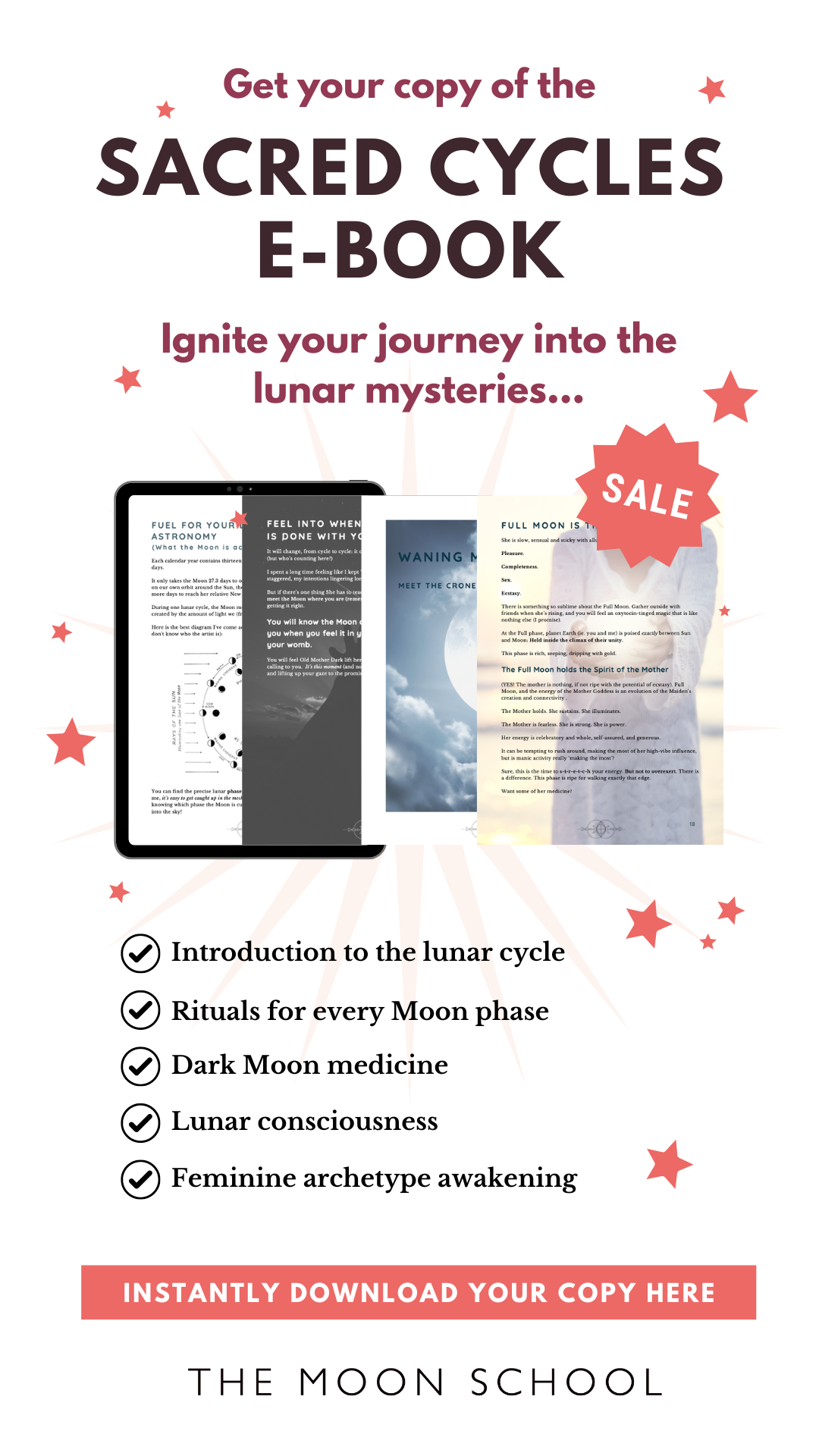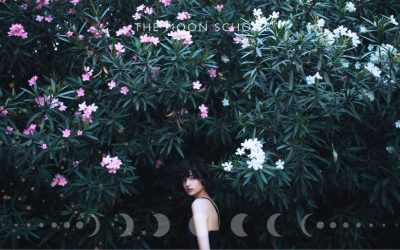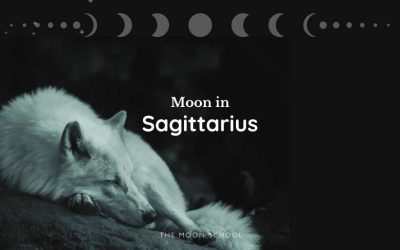The waning gibbous Moon is a little-known (and often underappreciated) phase of the lunar cycle that offers many gifts and benefits if you know how to work with it.
But most people don’t.
It tends to be the full Moon phase that gets ALL the attention, with its bright, magnetic, illuminating energy. But embracing the more reflective and less dynamic waning gibbous moon phase can help you understand the cycle of lunar wisdom in a whole new light.
So let’s take a journey into the heart of the Moon, and uncover the profound influence of this waning Moon
What is a waning gibbous Moon?
The waning gibbous Moon is a lunar phase that occurs after the full Moon and before the last quarter Moon. During this phase, the illuminated portion of the Moon decreases, leading to a gradual reduction in its brightness. The waning gibbous Moon is characterized by its distinctive shape, where more than half but less than fully illuminated portion of the Moon is visible from Earth.
What is the energy of a waning moon?
The energy of a waning moon is associated with gentle release, self-reflection, and completion. As the Moon transitions from her full Moon phase, the energy offered can redirect us inwards. Our focus shifts from the bright dynamism of the cycle’s peak towards more introspection as the Moon’s light ebbs.
The waning Moon phase also holds a sense of culmination and closure which calls on us to pause and reflect in our lives.
Also read: The Enigmatic Meaning and Symbolism of the Crescent Moon
Marking the period when the Moon’s illuminated surface gradually decreases, it’s inviting us to call back our power and energy, and work to consolidate the events of the Moon phases this far.
The waning gibbous phase often coincides with a time of greater self-awareness. Our perception is heightened, making things seem clearer than they did under the sometimes erratic full Moon energy. It energy supports activities that require attention to detail and scrutiny, such as editing, proofreading, or accounts and bookkeeping.
Encouraging introspection, the waning gibbous Moon phase provides a beautiful opportunity to delve into deep-seated emotions that sit behind our patterns of behavior, to gain personal insights.
It can also support the practice of gratitude, as it prompts us to appreciate the lessons learned and experiences gained over the previous lunar cycle.
The lingering brightness of the full Moon, coupled with the disseminating introspection offered makes this a powerful time to start acknowledging and releasing what no longer aligns with your path.
Also read: Spiritual Meaning of the Waning Gibbous Moon
How does a waning gibbous Moon affect people?
The waning gibbous phase tends to influence people by promoting a sense of reflection, emotional release, and preparation for closure. It’s energy can feel introspective, and it encourages us to assess our experiences and begin the work of releasing emotional baggage.
Compared to the full Moon phase, the waning gibbous phase has a subtle impact on individuals. After the dynamic and creative influence of the waxing Moon phases, the waning gibbous Moon can bring a sense of introspection, prompting people to reflect on their past actions, relationships, and personal growth.
Also read: 5 Best Waxing Moon Rituals for Manifestation
Now the building, creative momentum of the waxing Moon phase is over, there’s a distinct change in focus. Being the first of the waning phases, the gibbous Moon encourages us to begin the process of emotional release.
It’s the first opportunity we have in the lunar cycle, which allows the time and space for self-reflection, contemplation, and analysis.
People may be more inclined to seek closure in various parts of their lives, whether it involves concluding projects, resolving conflicts, or making peace with past events. The waning gibbous phase can also influence decision-making, as you may feel compelled to evaluate your goals, assess your priorities in life, and then make any necessary adjustments.
Bleeding on the waning Moon? Read: Meaning of the Purple Moon Cycle
Born on a waning gibbous Moon?
People born on a waning gibbous moon often possess a natural inclination for teaching as they have a deep understanding of the way the world works.
With a quick-witted and alert personality, individuals born beneath this waning Moon can be introspective, which makes them insightful and empathetic teachers, adept at guiding others through complex emotional and intellectual terrain.
Their keen eye for detail gives them a talent for getting to the root of problems and perceiving all sides given of a situation of problem. They make good teachers, though their loved ones may get impatient with their desire to discuss, analyze, and explicate in every conversation!
On the spiritual side, individuals born on a waning gibbous moon may lean towards the logical, having a gift with numbers, and words, finding the complexities of modern life a breeze.
Yet for those with the water signs of Cancer, Scorpio and Pisces in their charts, the mental focus of their personality will likely be balanced by their dreams, imagination, and creativity.
10 Tips for Connecting with the Waning Gibbous Moon in Astrology
Waning gibbous Moon energy will be moving through you whether or not you choose to consciously engage with it. But working with intention at this phase, will enable you to harness the gifts of this phase in ways that will truly benefit you and your life.
Here are 10 tips to partner up with this lunar phase –
1. Reflect and review
Slow down and spend some time in conscious self-reflection. Ask yourself what went well for you during the past lunar cycle, and what didn’t. Use journaling to help review your past past experiences and the decisions you made that brought them into being.
2. Release and let go
Reflect on your lingering emotions, habits, or situations and identify what no longer serves your highest good.
Write them all down on a piece of paper, acknowledging their presence in your life. Then perform a symbolic act of release, such as tearing up the paper or burning it, visualizing the release of these burdens.
3. Focus on emotional healing
Tend to yourself by focusing on emotional healing under this waning Moon. What are you really feeling emotionally? Are there any feelings or emotions you are suppressing? Why? What can you do to support yourself, to allow them to be fully felt, so they can move through you and be released?
Also read: How to do Inner Child Work to Heal Your Past and Empower Your Future
4. Give gratitude
Cultivate a sense of gratitude by acknowledging lessons learned and experiences gained.
After the deliciousness of the creative, productive waxing phases, for some, the waning Moon affects positivity levels, as the drawing in of light can feel a little negative. This makes it even more important to give gratitude.
Being thankful isn’t just about having more things, it’s about appreciating the journey to self-realization.
5. Declutter!
Utilize the withdrawing, receding waning gibbous Moon’s energy to declutter your physical spaces, such as your home and work environment. Clearing and cleansing your physical world at this time can help to shake up stuck and stagnant energy, so that it’s easier to let go of old habits, patterns and beliefs.
6. Perform a closure ritual
Engage in closure rituals to bring completion to unfinished matters and prepare for new beginnings. These are different from release rituals, which help to remove something from your life and are better performed under the waning crescent Moon.
Closure rituals are designed to help you to achieve a happy and healthy ending to something that has run its course.
Also read: 5 BEST Waning Moon Rituals for 2024
7. Try dreamwork
Explore dream interpretation and delve into the subconscious during this reflective phase.
8. Do your shadow work
Still close to the light of the full Moon, the waning gibbous Moon is a great time to practice shadow work. The shadow is formed from parts of your personality that have been deemed unacceptable. Yet these shadow aspects are often personality traits with gifts we’re entirely unaware tha we have.
Doing shadow work can offer insights into a deeper level of the self. This is a great lunar phase to dive in, as is the waning crescent.
9. Cleanse your energy
Use the influencr of the waning gibbous moon for spiritual and energetic cleansing practices, such as smudging or saining, or other methods to cleanse and purify.
10. Prioritize self-care
Prioritize self-care and nurturing activities to support emotional well-being and inner balance during this phase. Often women work really hard during the first half of the lunar cycle, and then reach a peak at the full Moon. And although it makes sense to slow down once the cycle has reached a peak, we often try to keep going.
Resist the patriarchal push to be ever progressing! Begin to bring in more self care and downtime at the lunar phase.. by the time the waxing crescent arrives, you’ll be so glad you did.
How the waning gibbous Moon phase fits into the lunar cycle
The lunar cycle is the sequence of changes that occur as the Moon orbits Earth. It takes about a month (29.5 days) for the Moon to complete one orbit around Earth. During this time, la Luna goes through eight distinct phases (well, 9 to be exact).
Phases of the Moon you need to know about…
Moon cycles are often separated up into eight distinct phases, which are:
New moon: The new Moon marks the beginning of the lunar cycle. At this phase, the Moon rises and sets with the Sun, making the new Moon invisible in the sky.
Waxing crescent: The waxing crescent Moon has a very thin crescent shape, rising during the daytime and setting in the western evening sky.
First quarter: The first quarter Moon forms an astrological square with the Sun, this phase is revealed as a clear “half Moon” shape. Light will expand, overtaking the dark quarter.
Waxing gibbous: When the waxing gibbous Moon occurs, she is closer to the full Moon phase than to the new. This waxing Moon appears as a blossoming disc of light, illuminated from the right in the northern hemisphere, and the left in the south.
Full moon: At the Full Moon phase, the Moon and Sun sit on opposite sides of Earth. Halfway through the Moon’s orbit, she’s fully illuminated and present in the sky all night long.
Waning gibbous: Past the cycle’s climax, the waning gibbous Moon phase is almost a mirror image of the waxing gibbous – a swollen round disc ebbing away from one edge.
Last quarter: The last quarter Moon (also known as the third quarter Moon) forms another astrological square, and appears as a clear “half Moon” shape. This time, though, dark will overtake the light.
Waning crescent: The waning crescent Moon (or balsamic Moon) is closer to the next new Moon, than to this cycle’s full Moon phase. It appears as an ebbing, almost disappearing arc in the western sky.
Dark Moon: The dark Moon appears between one and three days before the new Moon, and is invisible. During the dark Moon, la Luna rises with the Sun, but is bleached out by sunlight, and absent completely from the night sky.












